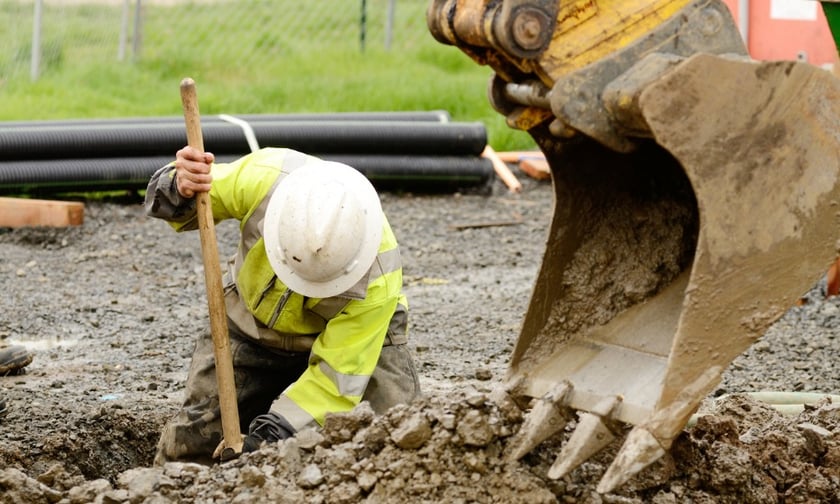

Last year, California experienced the largest fire, the deadliest fire and the most destructive fire in its history, according to CoreLogic, and the outlook for wildfire risk is unlikely to improve in the years to come as environmental, demographic, and economic factors put more structures in the path of destructive blazes.
“From 2012 to 2016, California wildfires destroyed a yearly average of 1,172 structures. However, in 2017, more than 10,000 structures were destroyed by fire, and in 2018 more than 22,000 structures were destroyed,” said Tom Larsen, content strategy principal for CoreLogic’s Insurance & Spatial Solutions group. “I struggle with superlatives to describe the activity of the last two years compared to anything we have seen in the past.”
Short winters, combined with long, dry, and hot summers have turned dry vegetation into an abundant fuel source, which has contributed to the number and intensity of wildfires in the US. The movement of housing closer to the wildland-urban interface is also to blame for exposing structures to a heightened risk of damage from wildfires, explained Larsen.
Meanwhile, he added, “Our homes are getting more expensive over time, even if we adjust for cost inflation. Newer homes are, on average, larger than older homes, and the materials and content that we place in them are more expensive. But even if a home suffers only partial damage from fire, the combination of better sealed homes (for energy efficiency) and a heightened sensitivity to allergens has led to the emergence of smoke damage as a measurable component of wildfire losses.”
When it comes to the growing risk of wildfires and rebuilding after a catastrophe, both insurance companies and their insureds need to have an accurate understanding of reconstruction costs, and how these are factored into homeowners’ coverage.
“The recent extreme wildfires in California underscore that close enough is no longer good enough when it comes to keeping reconstruction costs current and accurate. Furthermore, while a carrier may decide to absorb the cost of underinsurance in good faith on a single property, they are less likely [to do so] when a large-scale loss occurs, forcing the coverage shortage on to the property owner,” said Guy Kopperud, industry solutions principal for CoreLogic’s Insurance & Spatial Solutions group. “Our mission is to provide clients with solutions that will allow their policyholders to recover from what is already a traumatic loss. They should be able to trust that the policy they’ve purchased will do so.”
CoreLogic’s insurance clients often get asked by policyholders how reconstruction costs differ from the market value of their home; and there’s an important distinction.
“Some homeowners assume that the cost to rebuild a property is equal to what they paid for it or what they can sell it for – this is ‘market value.’ However, ‘reconstruction cost value’ is actually the cost to replace or rebuild a home to original or like standard at current – and the key here is ‘current’ – material and labor costs within a certain geographical area,” said Kopperud. “Also, it is important to note that reconstruction costs do not equal ‘construction costs new’ or what the home was originally built for when construction conditions were optimum. We know that costs are often higher to rebuild after a total loss due to production inefficiencies and loss of economies of scale.”
It’s important to start with the right reconstruction cost value by using a reliable valuation tool, and validating all the correct attributes of a property. CoreLogic’s experts recommend re-estimating a structure every two years at a minimum since the company’s recent Coverage Adequacy Report revealed that, over a two-year period, reconstruction costs rose by as much as 7.6% in some areas.
“It’s especially important to keep reconstruction costs current in areas at high risk of natural disasters; areas where one wildfire, or flood, or tornado could cause total loss to hundreds of homes,” said Kopperud.
CoreLogic’s tools provide an accurate assessment of the risk facing specific properties, and help take the guesswork out of P&C insurers’ management of wildfire risk.
“We offer wildfire risk scoring for a property to help clients understand the special risk characteristics and the likelihood of having a devastating fire in the neighborhood. We develop granular and precise reconstruction cost estimates for properties so that if the worst should happen, the homeowner will have sufficient funds to replace the structure that was lost,” said Larsen, adding that the company’s probabilistic risk models also enable consumers and insurance underwriters to evaluate the cost benefits of risk mitigation efforts for a particular property, including active brush management and the use of fire resistant properties and materials.
“The same risk models help insurers manage their aggregate risk exposure, helping them keep their promise to rebuild to their policyholders by ensuring they have adequate capitalization to pay for the worst events. And when the inevitable fire does occur, CoreLogic vigilantly monitors and quantifies the damage that occurs, helping ensure that sufficient resources will be available to begin the restoration process, supporting insurance claims adjusters and the builders and building supply industries that must divert resources for the rebirth of the community.”
